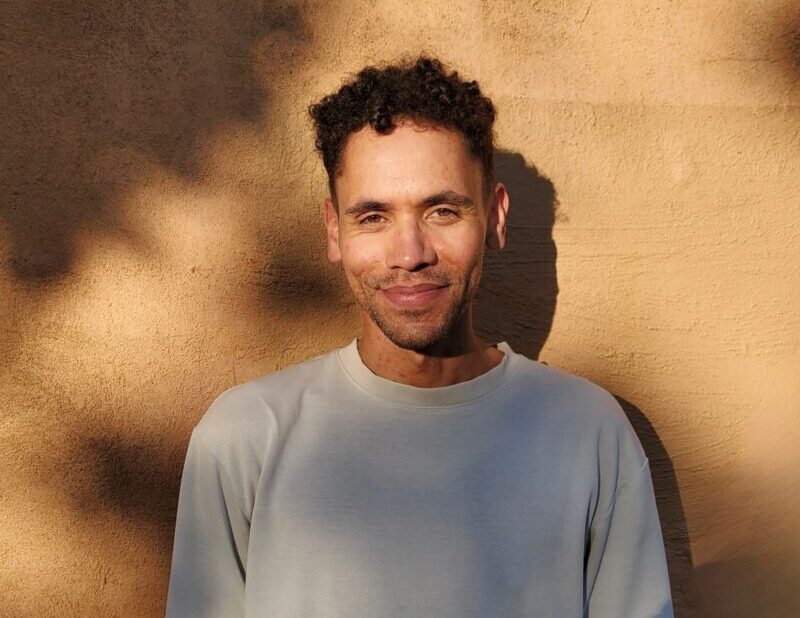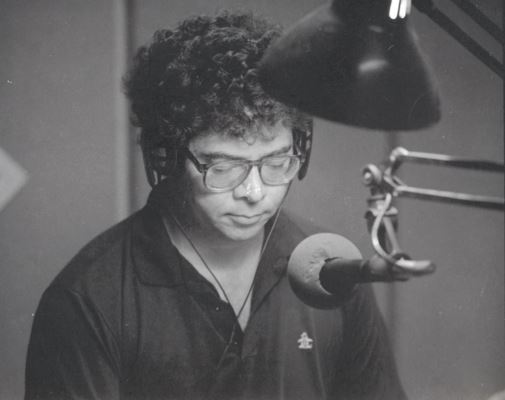A new book is hoping to help Gamilaraay people revitalise their kinship systems and kinship terminology through First Nations knowledge and mathematics.
“The Eagle and the Crow” by Dr JM Field (Spearim) is a series of lyric essays that focus on Gamilaraay conceptions of time and place, and the form and practical functions of kinship systems.
It also reveals the ways in which English can quietly disrupt languages and culture, as well as how colonialism attempted to erase First Nations cultural practices and knowledge during the mission period.

Dr JM Field’s new book cover (Image: UQ Press)
Dr Field is a Gamilaraay Mari from Moree and grew up on Darug land in a small town along the Great Dividing Range.
He studied maths and French literature at the University of Sydney before heading to the UK to complete his doctorate at Balliol College, at the University of Oxford.
Dr Field then came home to complete the McKenzie Fellowship in the School of Mathematics and Statistics at the University of Melbourne.
He is also the author of “Etta and the Shadow Taboo”, which received highly commended honours for the Victorian Premier’s Literary Awards. It was also shortlisted for the Prime Minister’s Literary Awards (Children Literature).
The inspiration for “Eagle and the Crow”, began while Dr Field was completing the McKenzie Fellowship, when he came across a paper about kinship that he felt did a great disservice.
Dr Field said it was bad in the sense that the proper respect that was due was not given, and also that the details were wrong and therefore the analysis was wrong.
“So as a mathematician, I decided to do those analyses myself, and I was able to show, for instance, that our kinship system actually very cleverly reduces incidence of recessive diseases,” he said.
“But it pretty quickly became apparent to me the sort of sociological consequences of my work, so thinking about how to revitalise kinship systems, thinking about how kinship terminology linked [to] structure – that always felt much more important to me.”
Dr Field said he was very lucky that his family kept a lot of their knowledge of kinship and he was able to talk to his Aunties and Uncles.
“But then it expanded and it was necessary for me to talk to other families that, in my view, kept different parts of the puzzle, because I think there’s not a single black family in the country that hasn’t held on to something precious.
“Even still, despite talking to many different families, there were still holes [and] gaps in understanding and in the knowledge that we were forced to not talk about it, we were forced to not speak it, and that’s where the mathematics side of it came in when thinking about the structure.“
“But talking to [mine and] other families, that was the start, and it was also the end”.
Dr Field said it began as wanting to rewrite a better paper but then moved into something much more important to him and his Gamilaraay mob.
The book focuses on moiety in kinship systems. Moiety means that everything is split into halves and he says that different people have different moiety.
“But it’s also true for different animals, different plants, different winds, different rivers, everything has a certain moiety.
“For people, the two moieties are called dark blood and light blood, so in Gamilaraay the word is Guwaymadhan, that’s the dark blood, and Guwaygaliyarr for the light blood.
“But amongst people, those two blood groups are further split into two”
In Gamilaraay language, he explains that the dark bloods are split into Yibaay/Yibadhaa and Gambuu/Buudhaa, and then the light bloods are split into Marrii/Maadhaa and Gabii/Gabudhaa.
“So if your mum is dark blood, then you are dark blood. But then for the sub types, you take the opposite one to what she is. So my mum is Buudhaa, which is the female version of Gambuu, but because she is Buudhaa, that made me Yibaay.
“So you have these sort of really interesting cycles amongst the blood types that are of these meats, or skins as other people call them in other places, that are determined matrilineally. We follow the mother and that determines where you sit in the kinship system,” he said.
Dr Field said that he is Yibaay Dhinawan.
“Where you sit in the kinship system, in turn, determines a whole host of things. Who you can marry is determined by where you sit, so you must always marry on the other side, the dark bloods must marry light blood.
“But it also determines much bigger things, for instance what sort of personal totems you may have, and therefore what sort of responsibilities you may or may not have,” he said.
Dr Field said it was open to mathematical thinking and analysis because of these sort of cycles of descent which shows “the kinship system itself is, by its very nature, mathematical”.
“That is the other really important thing about the kinship system is that, how you relate to another person and how you even refer to them is determined entirely by where you sit and where they sit.
“It gets more complex when you go higher in generations and across generations, and it seemed, at least to the linguist, that we had lost a lot of the terms for how we should call those people, and when they weren’t lost they were certainly confused.
“But if you really think a little mathematically, it very quickly becomes clear that none of those terms were lost. We still have them all. We just have to think about structure.”
When asked what the main goal for the book, Dr Field says, “First and foremost it is for my mob.
“It is to help other Gamilaraay people to remember where they sit in kinship, but also to understand how kinship ties to kinship terminology. So how is it that you should call your mother’s father? How is it you should call your mother in law?” he said.
He also hopes it will be of service to other mobs with similar kinship systems, but he makes clear that he does not speak on behalf of other mobs.
Dr Field said rather he hopes it will spark an interest and provide a guide for other mobs to find their own way to revitalise their kinship systems.
“A lot of our kinship systems have the same structure. We might have different words, but if you scratch beneath the surface, it’s the same structure, and in fact, traditionally, we intermarried because of that reason,” he said.
Dr Field’s next research project is currently revitalising the traditional Gamilaraay calendar, which he says this work is where he believes he can be of service to his people.
“If people support the book they are not just supporting the work in this book, they are supporting, I hope, other revitalisation efforts,” he said.
The Eagle and the Crow is now available through the UQ Press website.
Featured image: UQ Press





